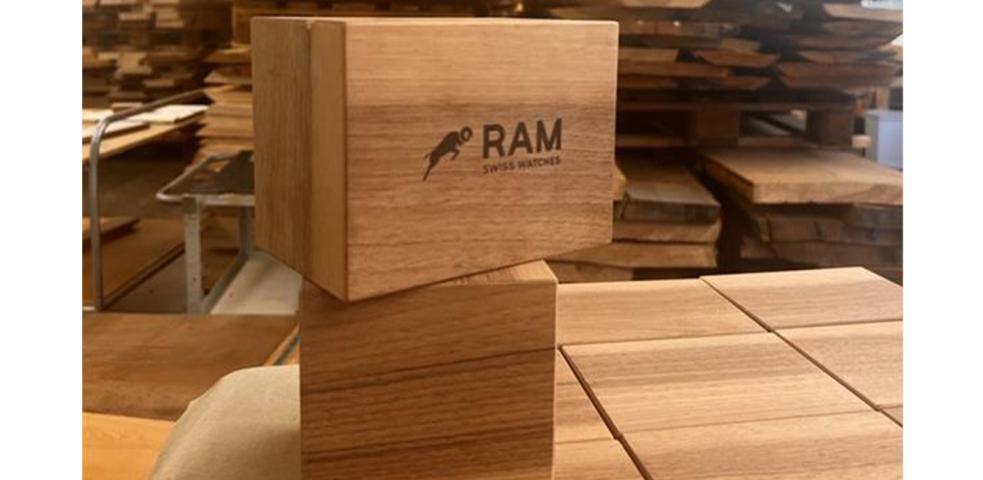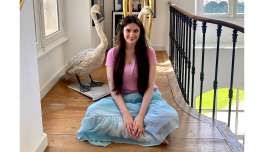A visit to «The B», The Centre for the Blind and Disabled in Bern and the Production of a Noble Packaging for the Exclusive Watches.
The art24 team travels to Neufeldstrasse in Bern. This is where the Bern Centre for the Blind and Disabled, abbreviated to «The B», is located. It consists of the non-profit foundation Blind and Disabled Centre Bern and its subsidiary - the likewise non-profit public limited company of the same name. «The B» is responsible for providing services for blind, visually impaired and multiply disabled people. This includes the core services of counselling, living, working and the business B - services that support people with disabilities in their social and professional participation in the best possible way. The company’s history begins in 1884 with the founding of the «Versorgungsverein für Blinde» (Association for the Care of the Blind), which was renamed from «Sehhilfe Bern» (Visual Aid Berne) to the current public company in 2009. Today, «The B» employs 370 people, 170 of whom have adapted jobs. According to the credo «Everyday life for all», they pursue the idea of an inclusive society. Thus, «The B» positions itself as an open centre. Nestled in Bern's Länggass district, «The B» is a place of encounter.
Roman is our man of the hour. He guides us through the process of how such a noble little box is made.
After a short round of introductions, the work already begins. We don't want to lose any time! What many people forget is what the object we have in front of us used to be. It is clear that we need wood for the box. The raw material is lying in the carpenter's workshop, cut into slices but still almost the full length of a tree trunk. Roman courageously grabs a board that has already been cut to size and cuts it into pieces to get to the desired size of the box. It is important to work precisely. Thus, Roman always measures the length precisely with his ruler, which is usually hidden in his work trousers. If something doesn't fit, it is made to fit.
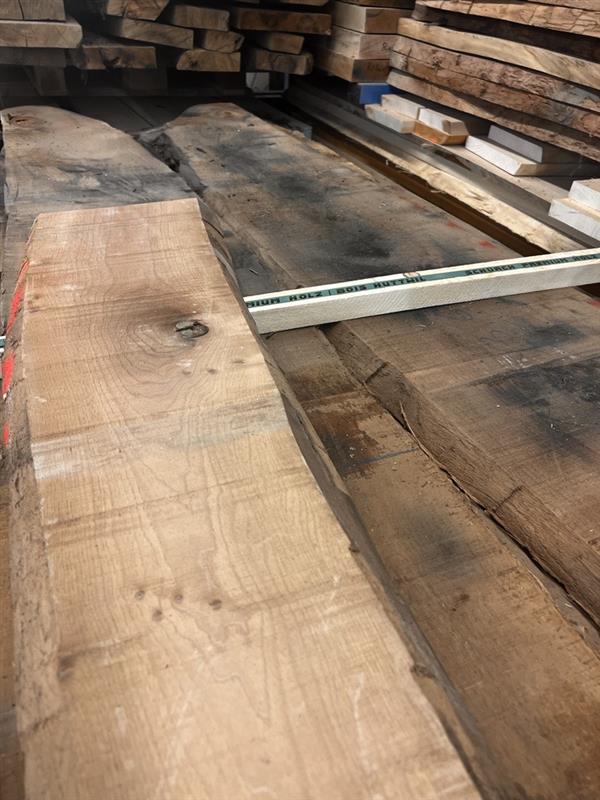
Picture 1: This is supposed to become a small box?
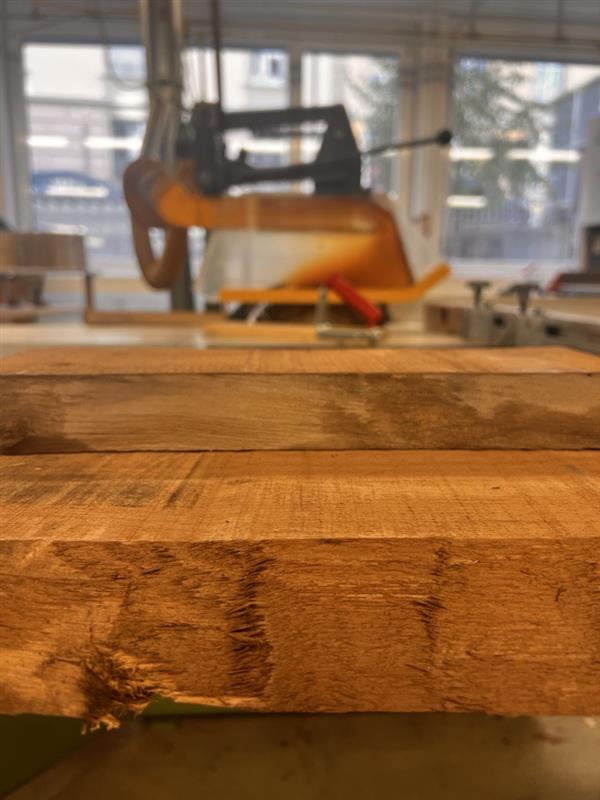
Picture 2: From the wood to the saw.
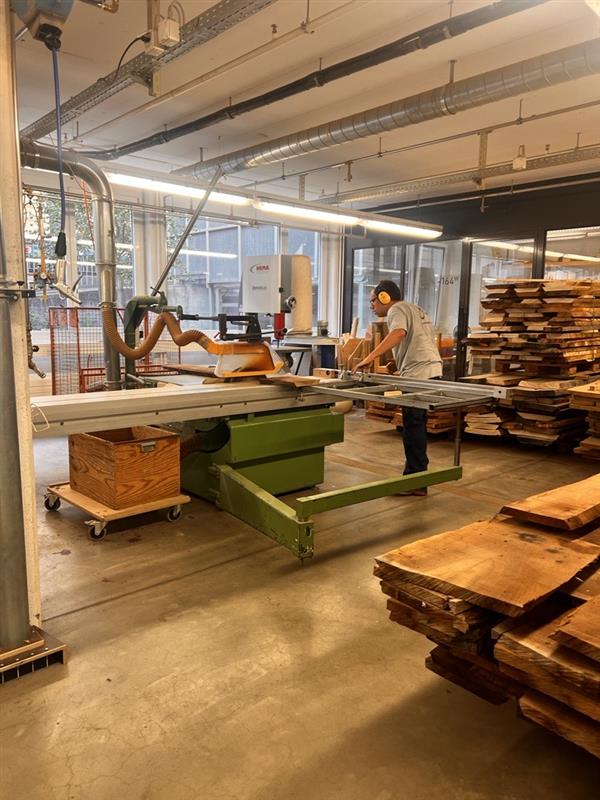
Picture 3: Cutting the tree trunk until it becomes a wooden board.
After cutting, it's off to the 4-plane machine. Roman accurately sets the dimensions. Jedi-like laser lines appear, showing him exactly where and how to place the wood. A piece of wood is stuck. Without further ado, Markus and Roman open the machine and rescue the piece of wood from its misery. The next step. The piece of wood is placed on the conveyor belt on one side and Roman then agilely retrieves it on the other side. After cutting, it's off to the 4-plane machine. Roman accurately sets the dimensions. Jedi-like laser lines appear, showing him exactly where and how to place the wood. A piece of wood is stuck. Without further ado, Markus and Roman open the machine and rescue the piece of wood from its misery. The next step. The piece of wood is placed on the conveyor belt on one side and Roman then agilely retrieves it on the other side. Finished is the wood planing operation.
Another planer is consulted. Roman has to use lubricant so that nothing gets left behind. And then it's off to the sanding machine so that the planed ends also look nice and smooth, as Roman explains to us. He is the master here and you can see his passion for the material and his work.
Then it's off to the milling machine to make sure the edges fit well together. In the end, the whole thing is a puzzle and every corner and edge has to fit.
The break is called at exactly 14:45. But Roman, our hero, makes an exception for us. He continues to work.
After the edges have been worked on, Roman lays down each side so that he can glue the sides together. First with tape, then with glue. And as if by magic, we have an almost finished box in front of us!
In order for it to be opened again, a deepened milling inlay is needed to insert the magnets. Roman masters this precise work, too, as if he had done nothing else all his life.
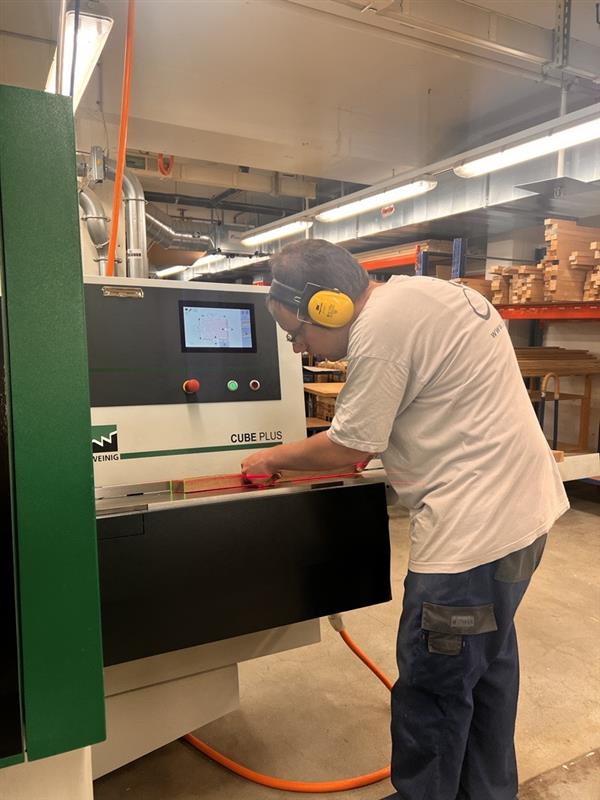
Picture 4: Cutting to size and planing.
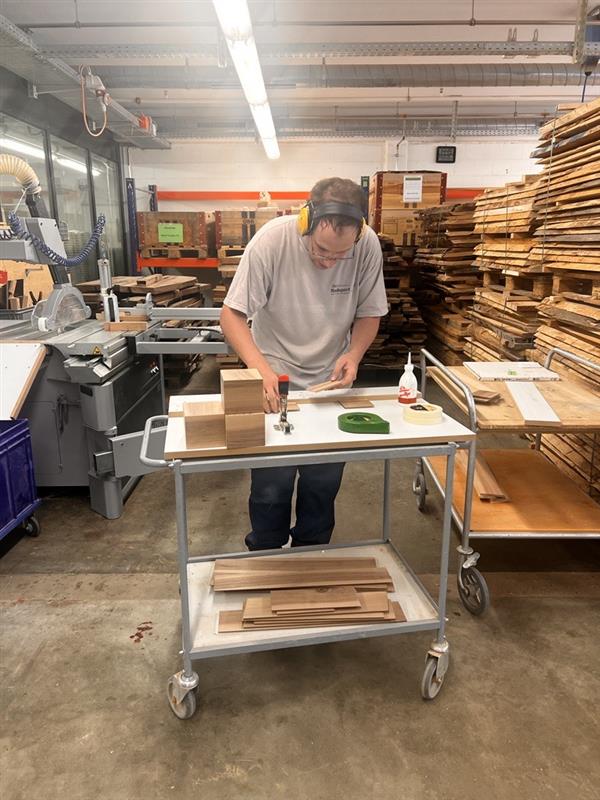
Picture 5: Gluing the elements together.
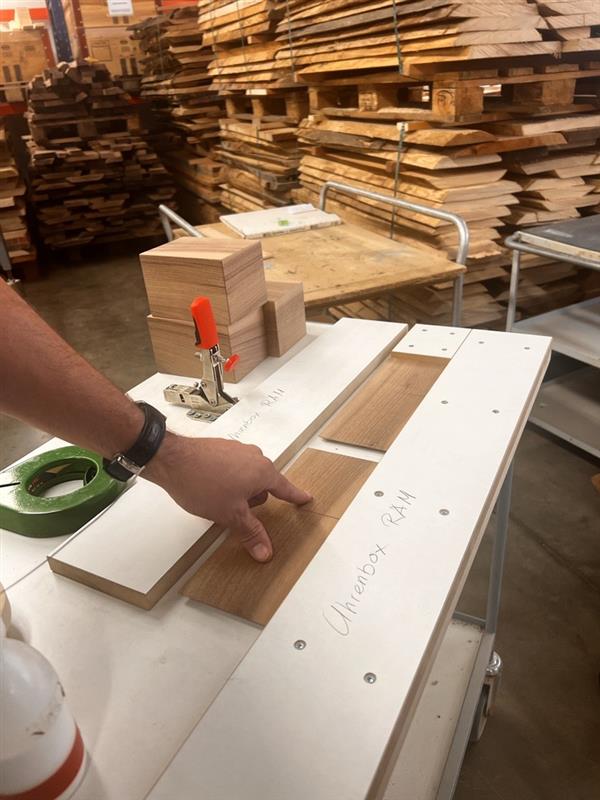
Picture 6: Everything should fit together.
Important and not to be forgotten, it still needs a branding! Here, already prefabricated, Roman warned to be careful, because the «stamp» is very hot. He skilfully placed the box in the guard rails so that it could not slip away and a second later it was branded.
Finally, for the author, comes the most beautiful part. The box is oiled in hard oil wax. The room was so wonderfully scented and Roman was such a joy to watch, we could have stayed there for an eternity.
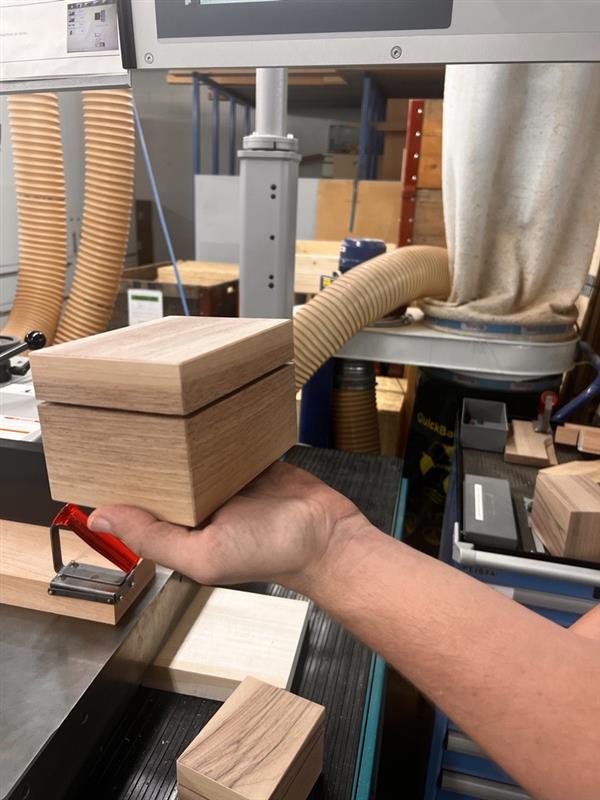
Picture 7: voilà, almost finished.
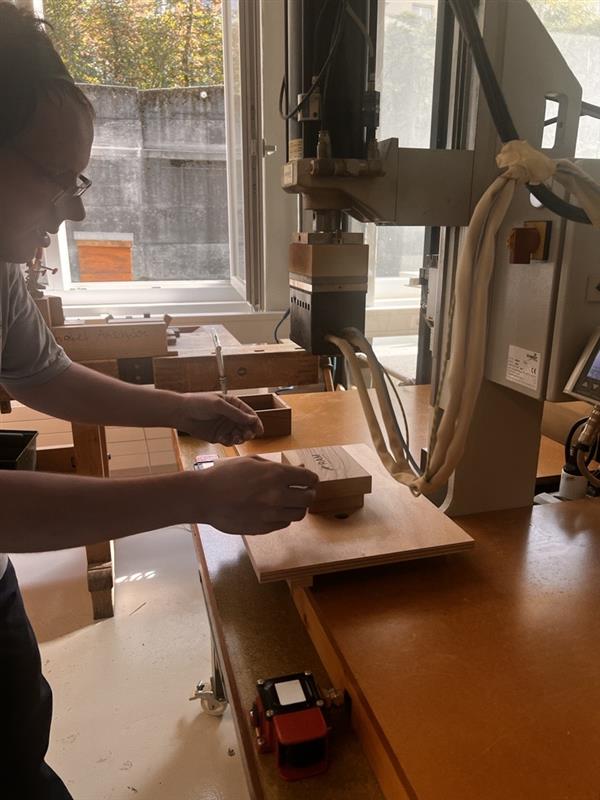
Picture 8: branding
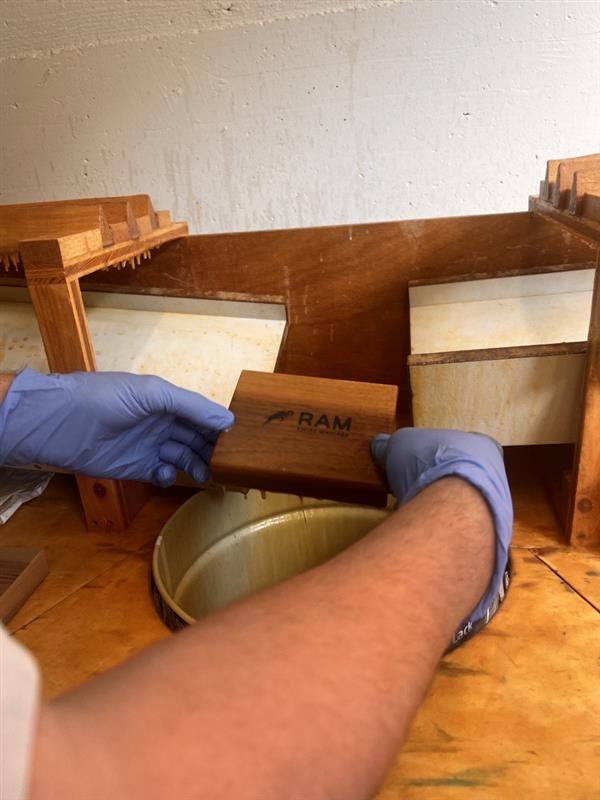
Picture 9: oiling with the branding RAM.
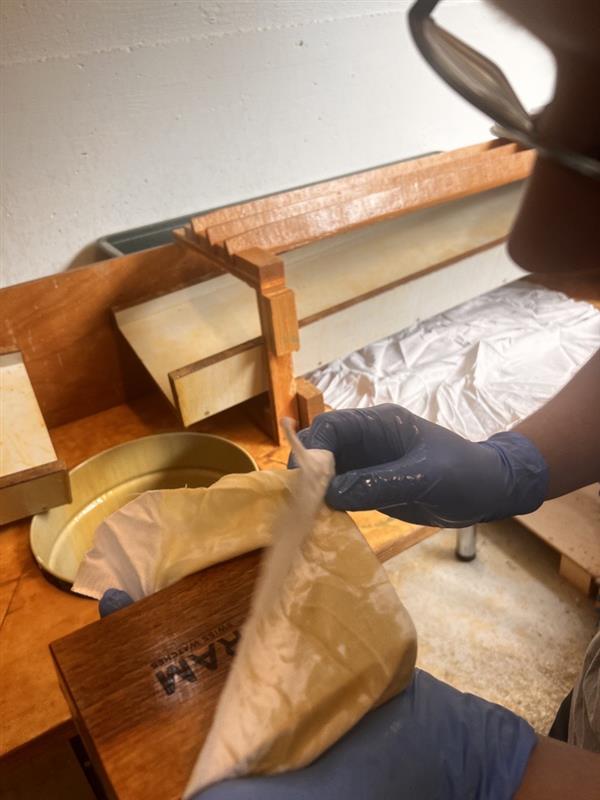
Picture 10: Oiling
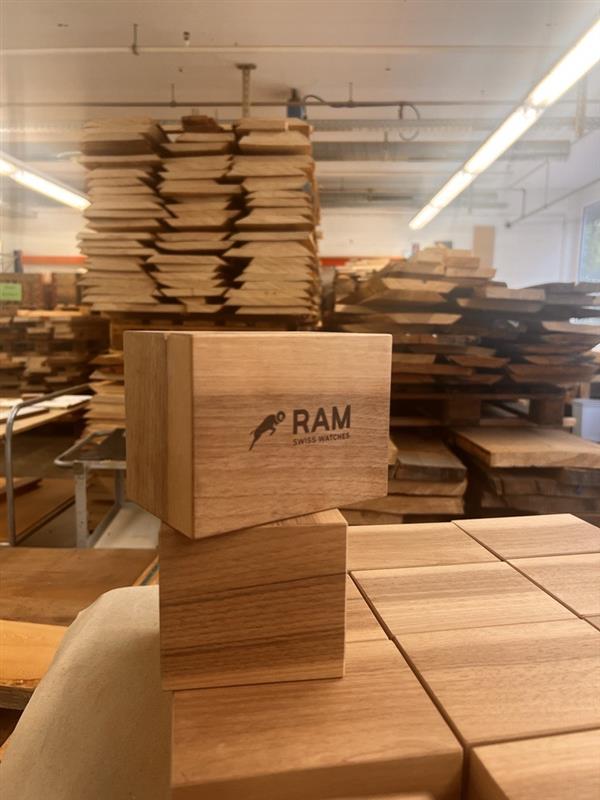
Picture 11: The finished box.
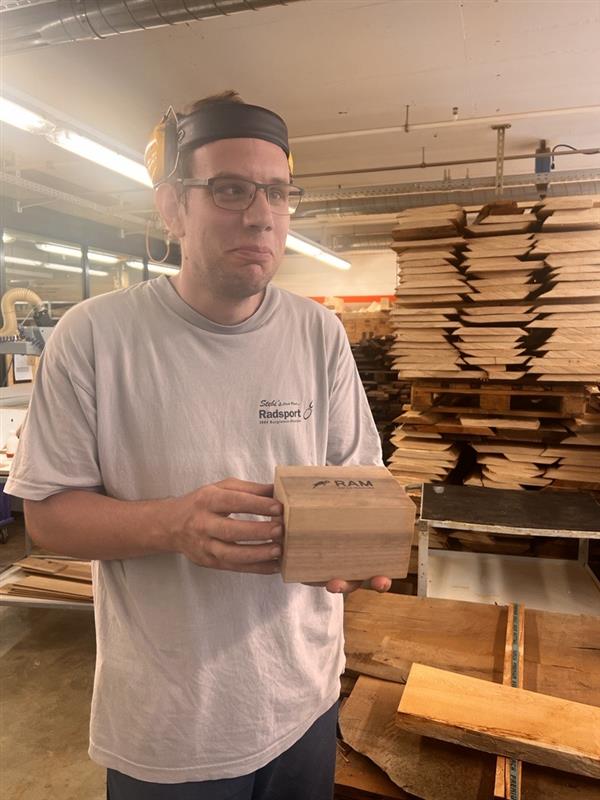
Picture 12: and the jewel is ready.
The afternoon was wonderful, because not only could we learn a lot from Roman and the workshop crew, it is also great to observe that this work is done with joy and a lot of commitment.
Many thanks for that, dear Roman and Markus!
